News Archive
The balloon before the blast
These are some images of the balloon test right before the balloon explosion. The images were obtained by several people and shared by Evan Schreiber (@SchreiberEvan), reporter of Tucson Now via his Twitter account
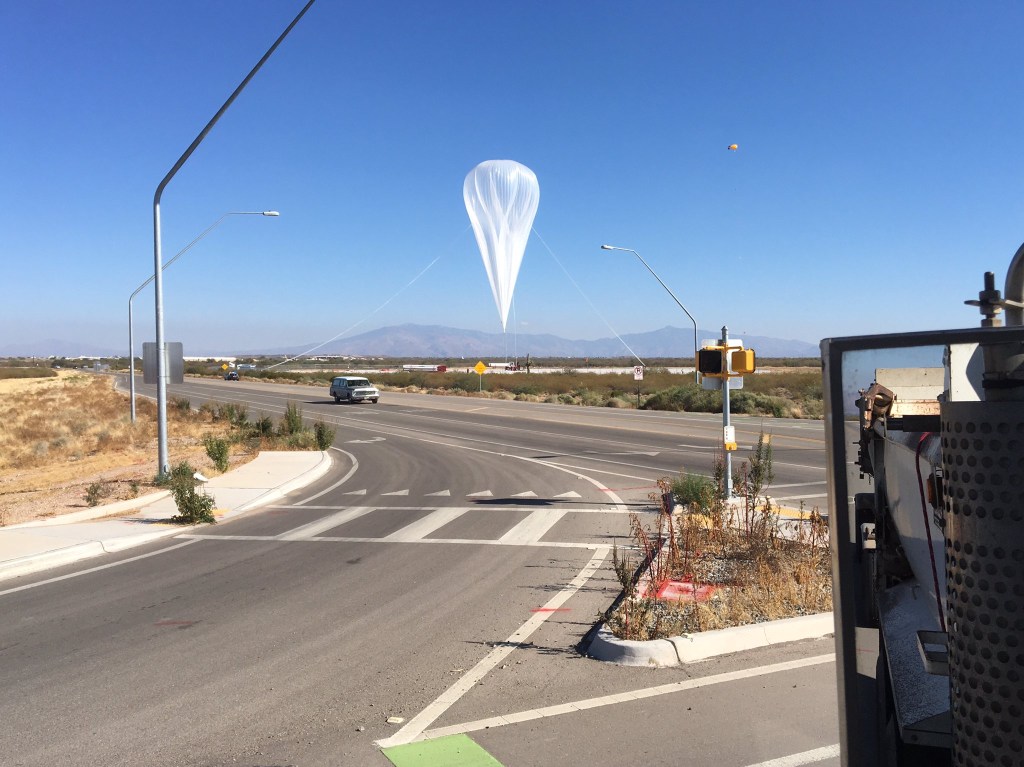
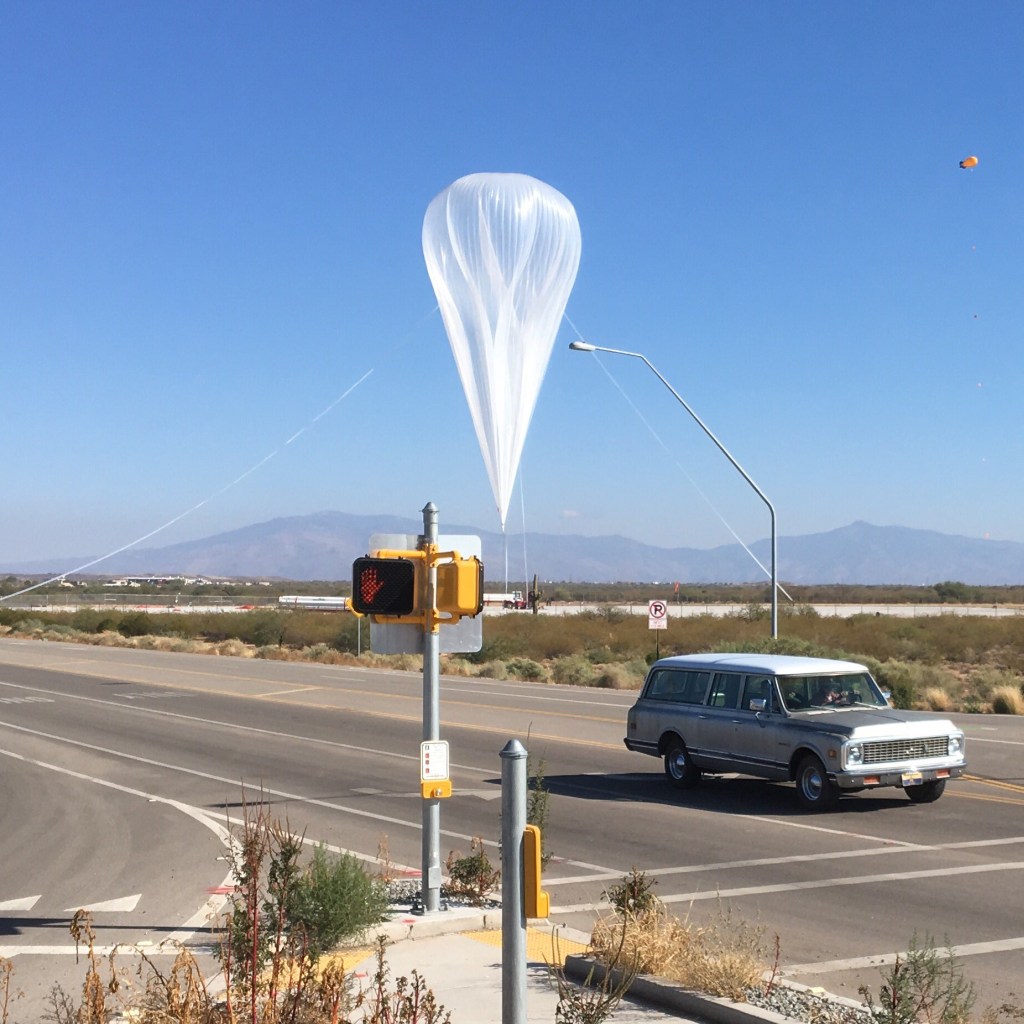
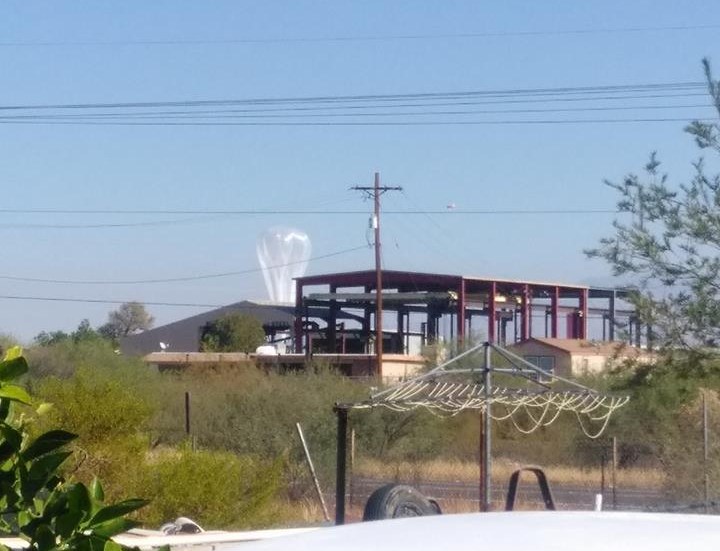

-
December 24 2017
A World View balloon explodes during a test outside Tucson, Arizona
Space Port Tucson, Arizona.- The calm of the southern part of the city of Tucson, Arizona, was suddenly altered in the afternoon on December 19, 2017 by a loud explosion originated in the balloon launch facility operated by World View Enterprises (WVE), which is located 6 miles south from the center of the city.
The incident occured while a static balloon test was underway in the launch pad. No details were provided on the nature of the test or the identity of the customer who requested it.
Space Port Tucson had its grand opening on February 23, 2017, as the second commercial facility of the United States specialy built to launch stratospheric balloons (the first one belongs to Near Space Corporation, a.k.a Johnson Near Space Center, in Oregon). The first balloon there was launched on October 1st, 2017 as we can see in the image below these lines.
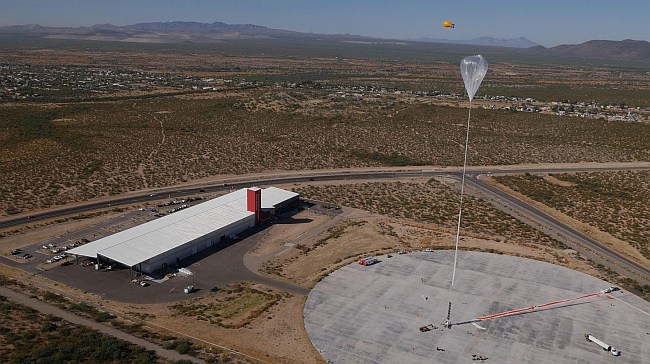
The facility houses the company's process from stratospheric balloon manufacturing, passing through payload integration, assembly and development activities, and flight mission control. Among many of the features of the installation is a balloon manufacturing table stretching over 1/10 of a mile long, a 100 ft tall parafoil test and quality control tower, and a mission control room overlooking the 700 ft diameter concrete launch pad.
The explosion was informed via social media by residents and workers in the zone, who reported that the blast was heard at least from 3 miles away. One of the affected companies Raytheon Missile Systems, which operates its airport plant adjacent to Spaceport Tucson further south, sent an email message to its employees, explaining that a "substantial explosion" at the WVE site had caused some minor damage to Raytheon buildings, such as falling ceiling tiles and dust debris, "as well as a litany of shock sensor alarms being activated."
World View's statement:
"...Following the completion of a successful fill test on the launch pad, during the process of backing out of the full fill configuration, a significant balloon rupture occurred which was reportedly heard in the local area. We have reached out to reassure our immediate neighbors. There were no injuries and only superficial facility damage at the site. The flight system itself was unaffected..."
Immediately, local TV networks sent reporters to the area that arrived the scene at the moment that personnel from WVE was cleaning the launch pad on which were scattered pieces of the balloon that exploded.
Also, the images showed trailers on the site with cylinders labelled as helium as well hydrogen and also pieces of polyethylene seemingly melted over one of the vehicles.
This detail raised first suspicions about the origin of the explosion involving a flammable gas (helium is inert, while hydrogen not).
After some inquiries were made, World View issued an statement (right) which avoided to mention the word "explosion" and refered to a "rupture".
Also in declarations to the local station KGUN, World View CTO Taber MacCallum told "...We were happy with how the test had gone, and we were backing out of the test and in the process of backing out of the test the balloon ruptured, causing some minor damage to the building here ... but everyone's fine..."
Although there were at that moment some testimonies of people that after hearing the blast, witnessed and even obtained pictures of smoke up above the place on which the balloon was being inflated , the information was inconclusive.
However, the next day, the true dimension of the incident was evident when the Arizona Daily Independent obtained and published on its website a video that showed the balloon billowing in the air while rupturing, and then afterwards how it burst in flames.
The low quality film can be seen below this lines
The appearance of the video forced World View to make the first official publication about the incident on its Twitter account stating for the first time that an investigation would be started. This clearly shows that what was initially intended to be shown as a minor mishap was actually a serious incident.
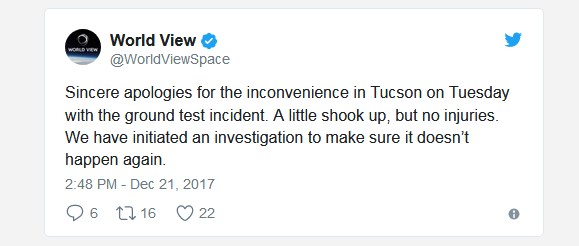
Three days after the explosion, Tim Steller, columnist of the Arizona Daily Star along with his colleague David Wichner published a series of answers obtained from World View officials independently. At the core of the information obtained by the journalists, there were some important points to remark:
"...We have used hydrogen in ground testing, but only helium in flight operations at Space Port Tucson..."
"...As of now, we do not have any requirements or future plans for using hydrogen in ground testing or flight at the Space Port..."
"...We are initiating an in-depth formal investigation of the incident to determine the specific failure mechanism and root cause so that we can make necessary adjustments to procedures, standards and oversight to ensure that this cannot happen again on our site..."
"...We expect to have final results, recommendations and corrective actions, if necessary, in about 45 days...."
What I personally can not understand is the use of a potentially flammable gas in such a static test on the ground. The main advantage it has regarding helium in stratospheric flights are two: a better use of its greater lift capacity and dynamic behaviour (totally irrelevant in a low level tethered test), and of course its lower cost.
Aftermath
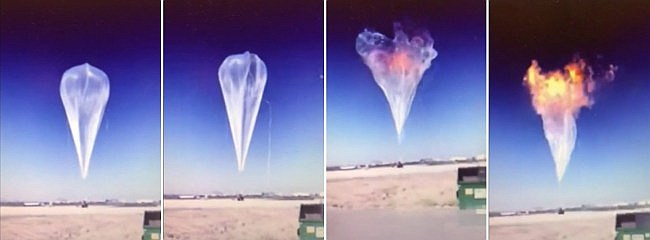
The incident came in a moment on which WVE is making great advances in their business and appeared to left behind some troubles of it's recent past.
During the recent Next-Generation Suborbital Researchers Conference held in Colorado the company unveiled the first pictures from its Stratollite high-altitude balloon platform aimed to rival in the future with satellite views. Also, World View received good news from the Arizona Court of Appeals which reversed a lower court ruling that declared Pima County's lease with the balloon company invalid. That was in a lawsuit initiated by the conservative Goldwater Institute to the Pima county over the $15 million agreement used to build the facility which is a county owned installation leased to World View.
However, the issue is not fully resolved as Goldwater announced that they plan to appeal this decision to the state Supreme Court.
Althought the focus of World View activity shifted in the last years to unmanned missions for NASA and other federal agencies, one great question is how all this could affect an important part of the future plans of the company regarding the manned tourist flights that they would offer for $ 75.000/seat using his VOYAGER platform, currently in development.
-
Share this on social media


